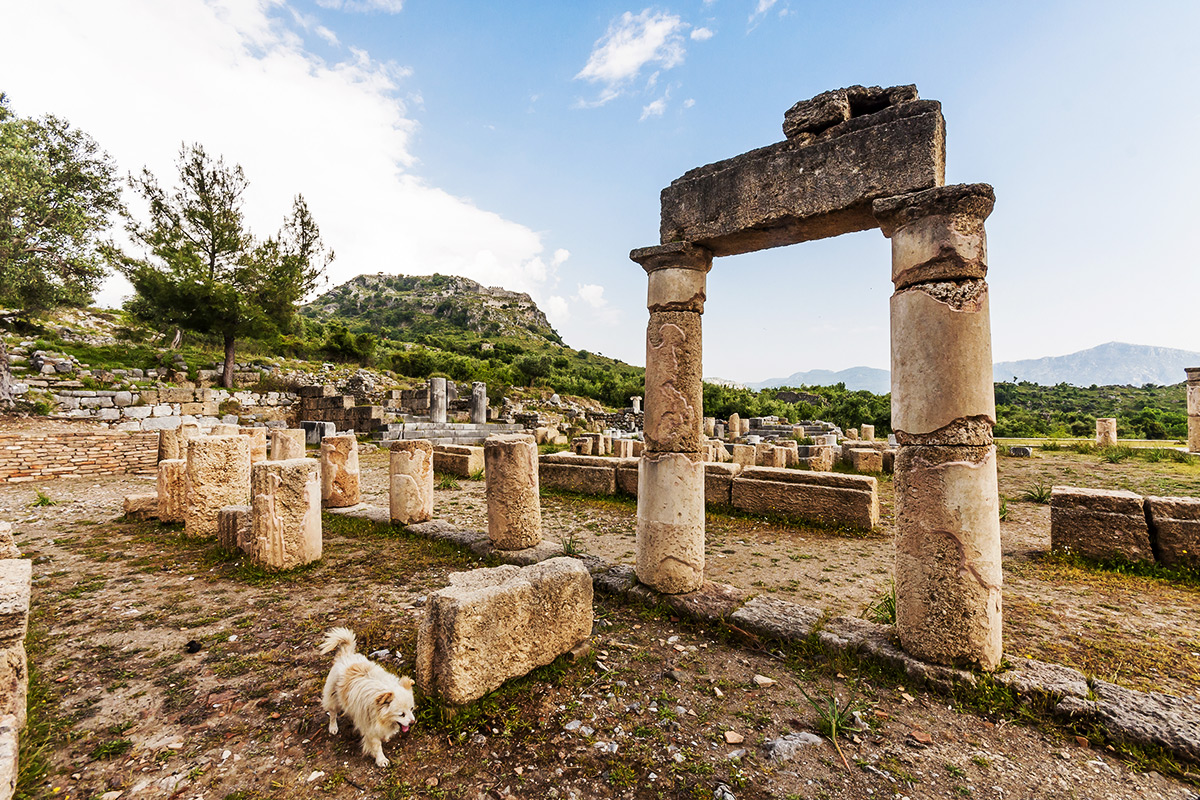Kaunos (Caunos)
Kaunos is in Dalyan near the city of Mugla in the Turkey. There are three ways of reaching Kaunos which attract great attention today owing to its Venetian type of channel and Lycian type of tombs. The visitors who come by means of their yachts, land on the island named Delikli Ada and reach the site of the ruins by starting off in small boats from here; those who come from Marmaris by sea route, drop anchor in the vicinity of Delikli Ada and also reach the site of the ruins in small boats; and those who come by land route, reach the ruins by starting boats from the Village of Dalyan which is at a distance of 27 km from Koycegiz.
The existance of the ruins of Kaunos was first discovered in the year 1842, and excavations have been carried on there by the Turkish archaeologists under the supervision of Prof. Baki Ogun since 1967.
Kaunos, the son of Miletos, had been indicated as the founder of the city and therefore, it had been named Caunos. The city was first captured by the Persians and then by Alexander and in the year 189 B.C., it was made subject to the Kingdom of Rhodes. We know that it continued until the year 167 B.C. Caunos was the subjected to the kingdom of Pergamon and was brought directly under the sovereignty of Rome after 133 B.C. You reach the site of the ruins by means of channel adorned with Lycian type tombs belonging to the 4th century B.C. The first place that we see is the acropolis of Caunos. The northern part of the city wall, which surrounds the acropolis, belongs to the period of Mausolos. The northwestern part has Hellenistic qualities. And starting from the harbour are seen the city walls of Cyclopean type belonging to the Archaic Period.
The locality called Suluklu Gol (Lake of Leeches) in Caunos today, was a harbour closed by means of chains during the Antique Period. The excavations performed at the north of this harbour have revealed a stoa which used to form a part of the port agora.
The fountain near the stoa has a plan of inantis style and has been restored recently, and the inscription which is seen on its side facing the harbour, contains the written decrees concerning the customs house.
